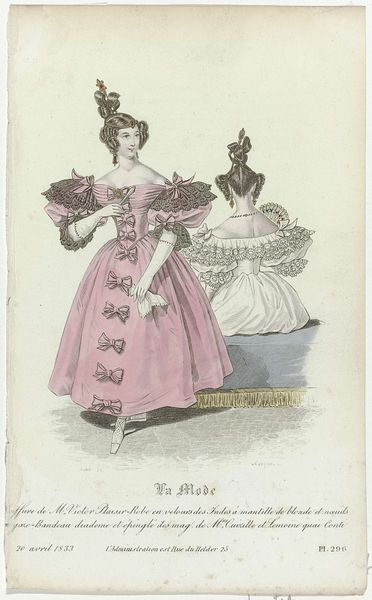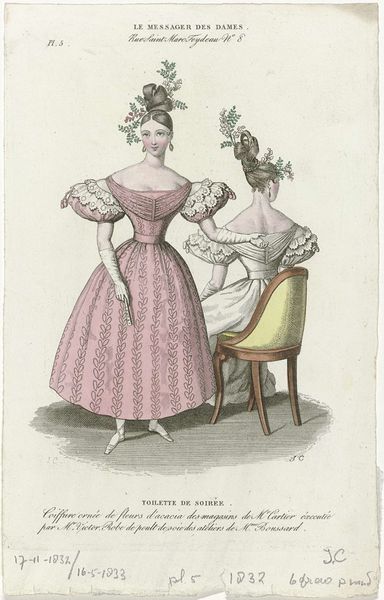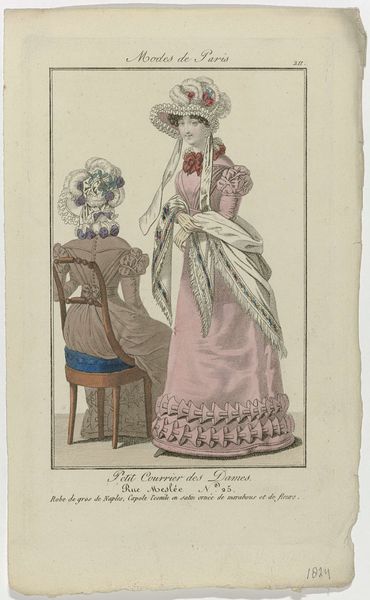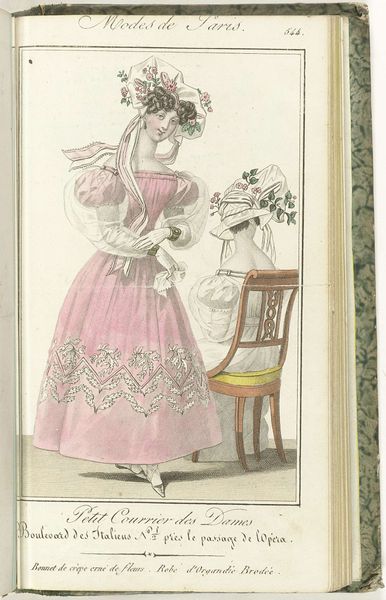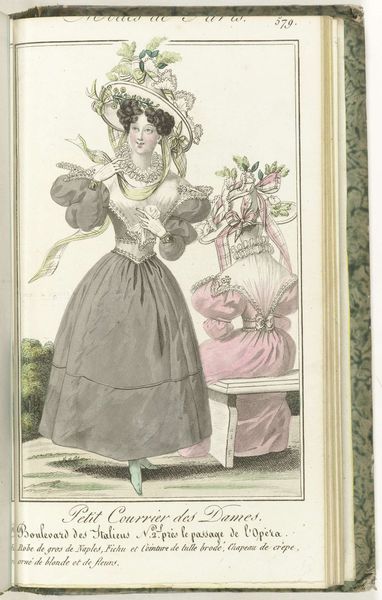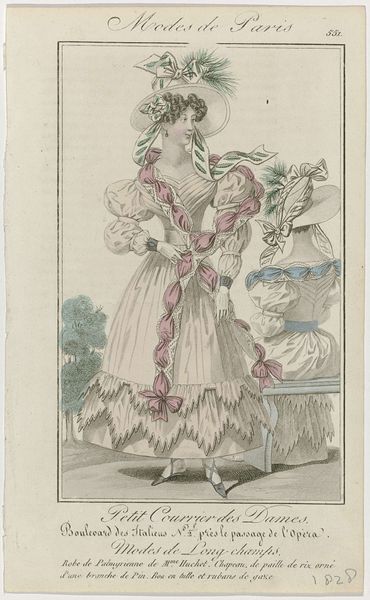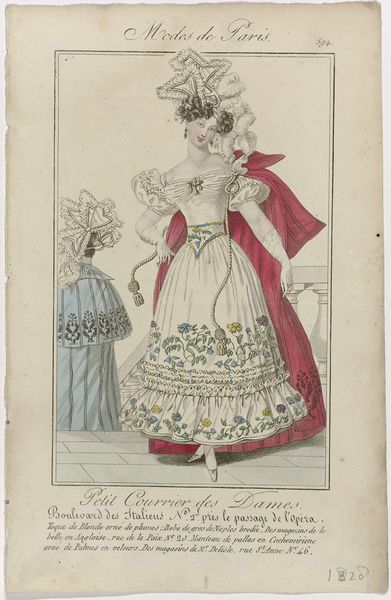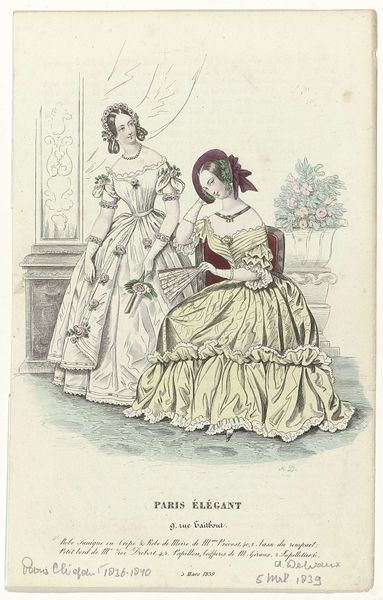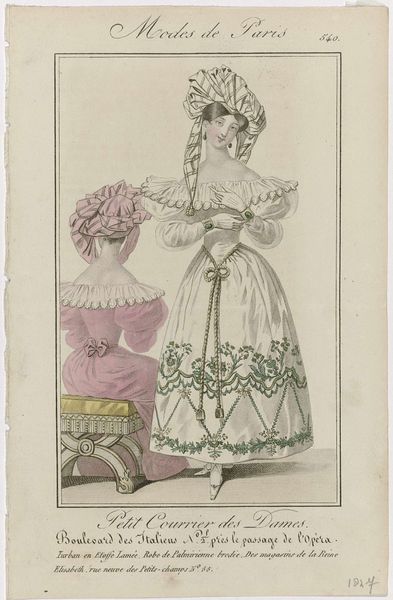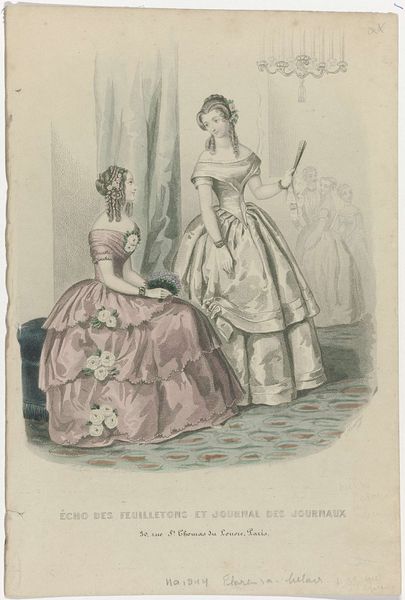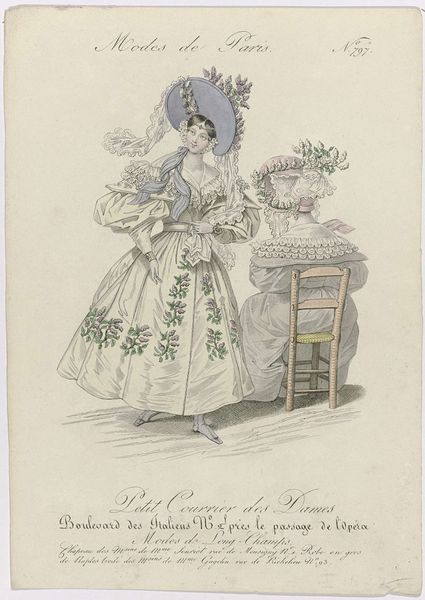
Dimensions: height 251 mm, width 156 mm
Copyright: Rijks Museum: Open Domain
Curator: This delicate watercolor print, created anonymously in 1829, is titled “La Mode, 1829, Pl. 10: Bonnet d'Herbault en blond…” Editor: The dress just leaps out, doesn’t it? Such a vivid carmine, particularly juxtaposed with those gigantic pale sleeves. There’s almost a theatricality to it. Curator: It's a reflection of its time, when the burgeoning fashion press started playing an increasingly powerful role. Prints like these dictated styles, shaped perceptions, and subtly enforced a specific kind of femininity and aspiration. The rococo influence is visible in the attention to detail and overall refinement. Editor: And what kind of identity do you think is suggested in the image? Does it challenge conventions or mostly uphold them? The woman is depicted as an object of beauty, holding a delicate fan in her gloved hands, but there seems to be very little space for the woman. Curator: The artist, whose identity we do not know, used drawing, print and watercolor techniques. This was common practice at the time, offering a wider distribution of fashion trends, allowing the burgeoning middle class to engage. These images democratized fashion, creating both aspiration and a sense of exclusion, simultaneously. Think about those hats – were they realistically attainable? The composition, a woman and reflection in mirror, is common trope which serves as decoration and enhancement of fashionable garments. Editor: It brings up so many issues – class, accessibility, and the politics embedded in the seemingly frivolous world of fashion. And this, of course, translates even to contemporary discourse when there is also conversation on consumerism, labor ethics and exploitation. It encourages viewers to consider their place in broader socioeconomic structures and also to think critically about consumption and how these images uphold capitalist patriarchal structures. Curator: Indeed. Examining its social, cultural and institutional place, offers such perspective in both history and contemporaneity. Editor: For me, considering fashion imagery within these broader frameworks offers crucial space for meaningful conversation. Curator: A worthwhile lens through which to perceive imagery then, and perhaps even now.
Comments
No comments
Be the first to comment and join the conversation on the ultimate creative platform.

